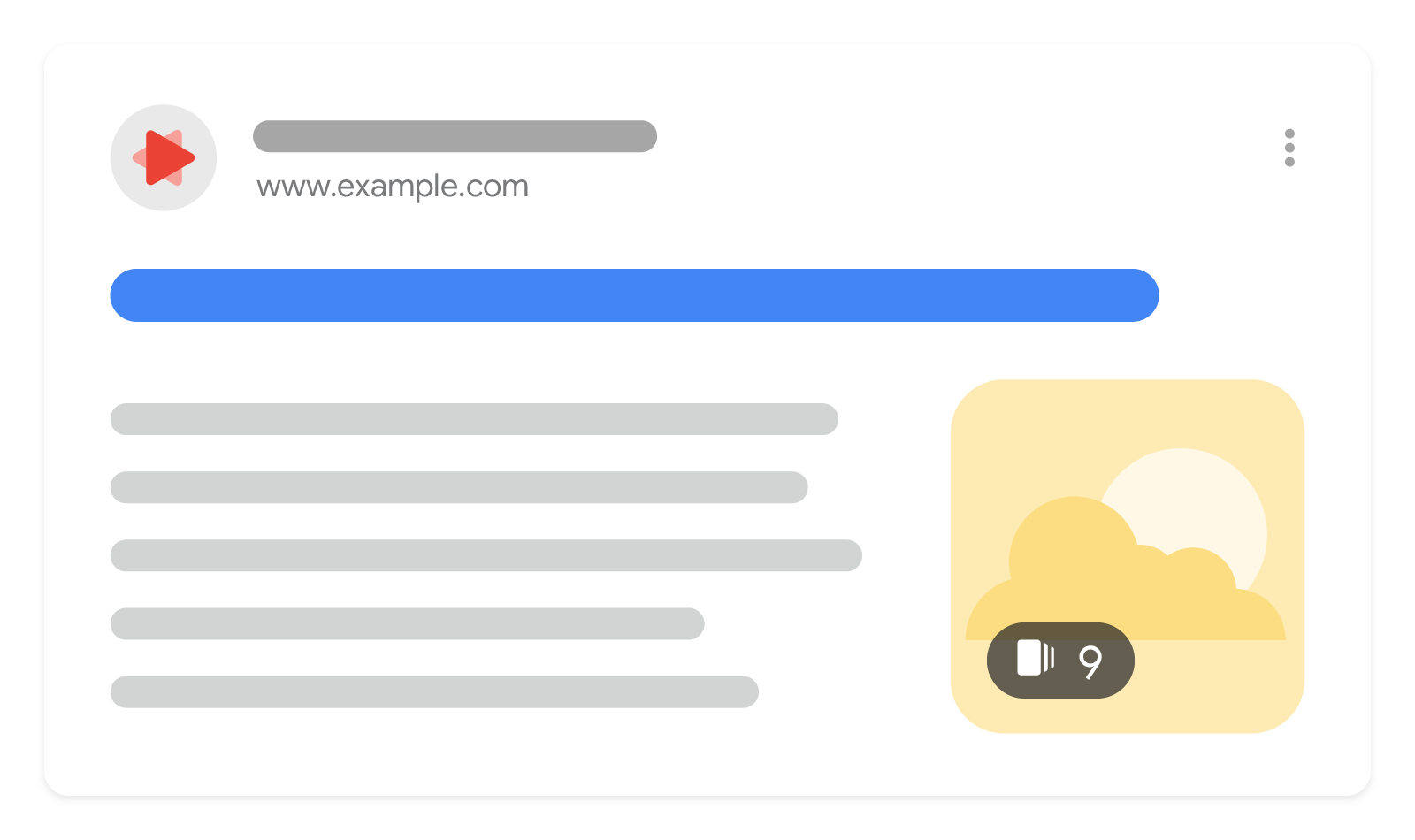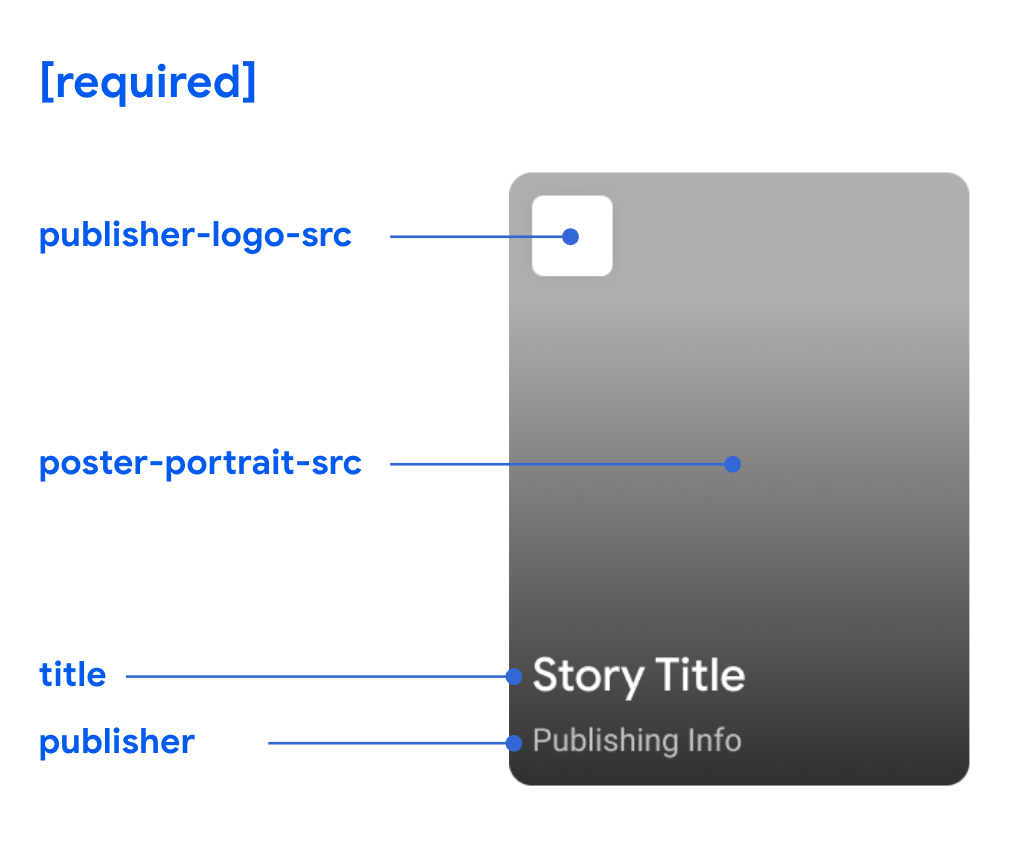在 Google 上启用网络故事

网络故事是热门“故事”格式的网络版本,可将视频、音频、图片、动画和文字融为一体,营造出动态的消费体验。借助这种直观的格式,您可以通过点按或者在不同内容之间进行滑动,按照自己的节奏进行探索。
本指南介绍了如何使您的网络故事有资格显示在 Google 搜索(包括 Google 探索)中。
下面简要介绍了如何在 Google 上启用网络故事:
功能可用性
网络故事可以在 Google 搜索中显示为单个结果,并适用于所有可以使用 Google 搜索的区域和 Google 搜索支持的所有语言。
在“探索”信息流中,网络故事可显示为单个卡片,您只需点按该卡片,即可浏览故事。虽然此呈现功能已在 Google 探索适用的所有区域以所有适用的语言推出,但在美国、印度和巴西最有可能展示。
创建网络故事
网络故事本质上属于网页,必须遵循适用于发布常规网页的指南和最佳做法。您可以通过以下两种方式开始创建:
- 从众多故事编辑器工具中选择一款开始创建故事,无需进行任何编码。
- 如果您有工程方面的资源,可以使用 AMP 开始创建。为确保您的网络故事能够正常呈现,我们建议您使用 Chrome 开发者工具模拟不同的设备尺寸和格式。
为确保顺利完成相关流程,请查看创建网络故事的最佳做法。
确保网络故事是有效的 AMP
创作完故事后,请确保网络故事是有效的 AMP。有效的 AMP 故事是指符合各种 AMP 规范的故事。这样即可通过 AMP 缓存投放故事,确保为用户带来应有的效果和最佳体验。您可以使用以下工具确保网络故事是有效的 AMP:
- 网络故事 Google 测试工具:检查网络故事是否有效。
- 网址检查工具:检查网络故事是不是有效的 AMP,并查看网址的 Google 索引编制状态。
- AMP Linter:在开发过程中,通过命令行验证网络故事。
验证元数据
若要让网络故事显示在 Google 搜索或 Google 探索中,请提供必要的元数据,以便在预览中显示网络故事。
- 请参阅元数据的完整列表。
- 在网络故事 Google 测试工具中验证您的网络故事预览能否正确显示。
请注意,每个网络故事都需要包含以下字段:publisher-logo-src、poster-portrait-src、title 和 publisher。

检查网络故事是否已编入索引
检查 Google 搜索是否已将您的网络故事编入索引。使用网址检查工具提交单个网址或使用“网页索引编制”报告或站点地图报告查看状态。 如果您的网络故事未编入索引:
- 为了方便 Google 发现您的网络故事,请在您的网站上添加指向相应网络故事的链接,或者将网络故事的网址添加到站点地图。
- 所有网络故事都必须是规范网页。确保每个网络故事都有自己的
link rel="canonical"。例如:<link rel="canonical" href="https://www.example.com/url/to/webstory.html"> - 检查并确保您未通过 robot.txt 或
noindex标记禁止 Googlebot 访问相应网络故事网址。
